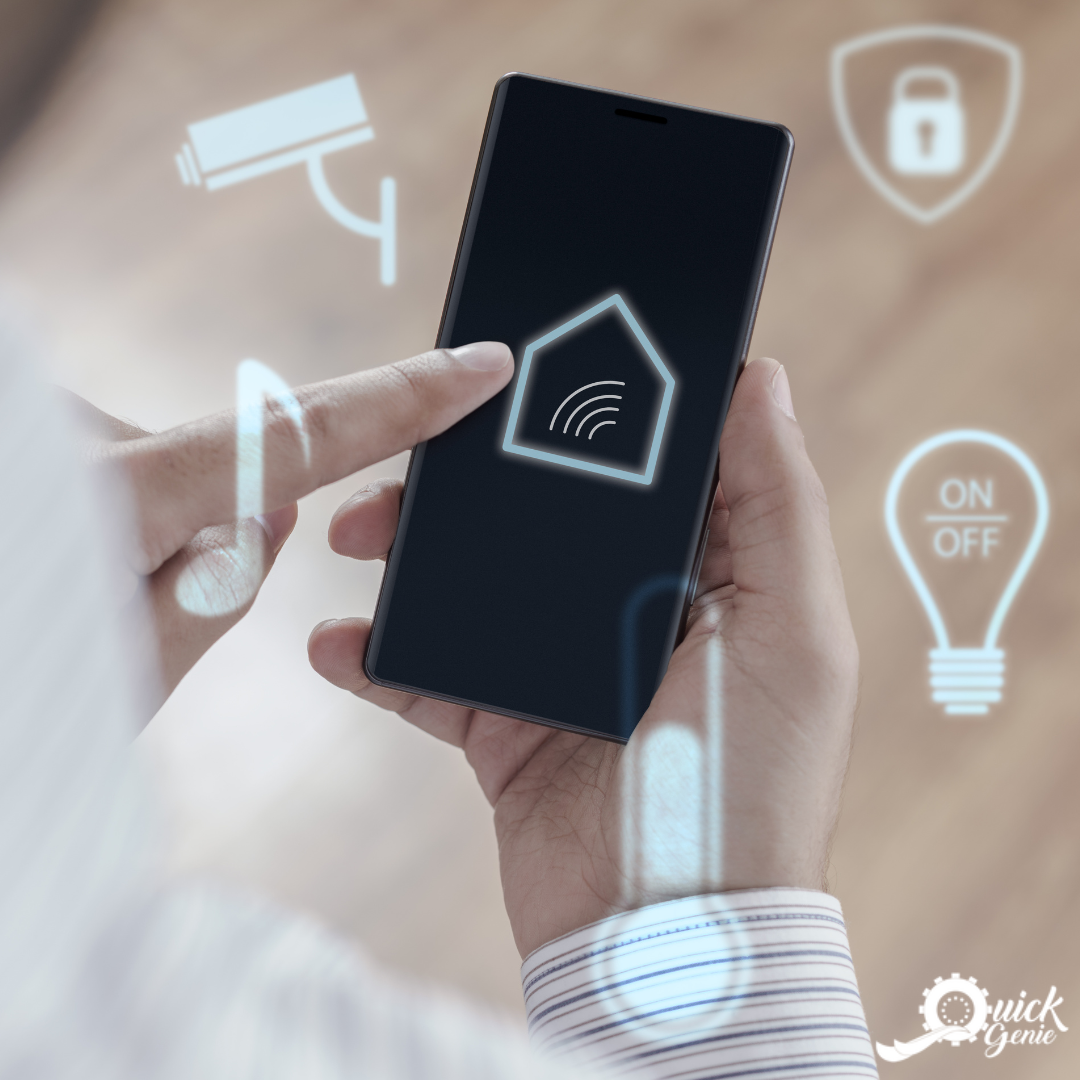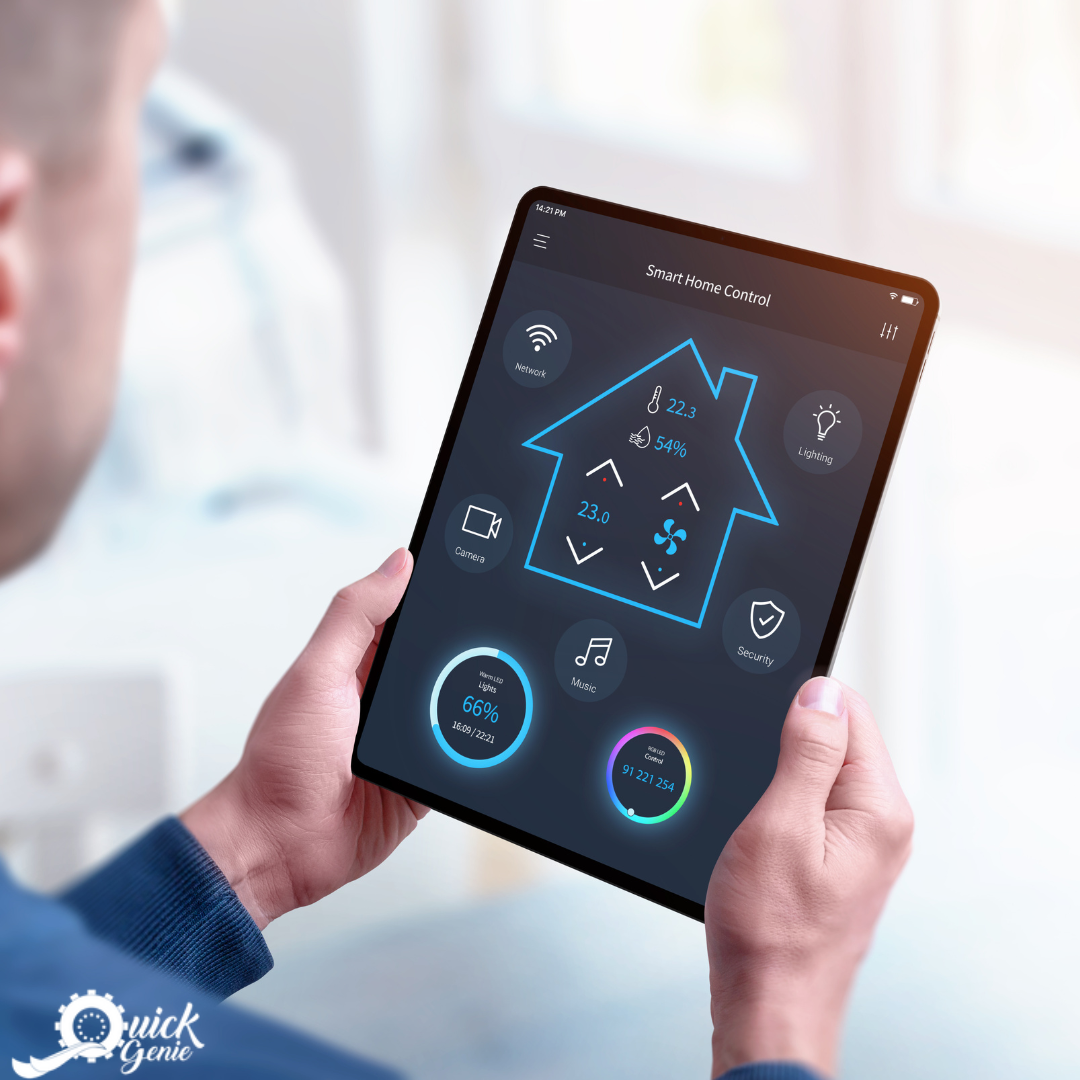QuickGenie (Exceptional Handyman & Tech Services Delivered to Your Doorstep in California, U.S.)
According to the recent reports, The Smart Home Market Size Worldwide in 2021 is 99.51 Billion Dollars.

Image Source: www.statista.com
A smart home is incredibly useful and improves the quality of life for the average homeowner in many ways as long as it works. There are hiccups, however when something goes wrong. For example, Alexa may not sync with other devices. Or maybe a smart bulb or switch decides not to follow its set schedule or it may not be possible for your smart hub app to locate nearby devices, even if you believe they are close and in working order.
Whenever Your Smart Home Devices Stop Communicating with each other, the following issues can be the reasons.
Poor Connection
Most problems are caused by either a poor or low-quality connection to the local network. Some devices sync via Bluetooth, but the majority use WiFi. Both Bluetooth and WiFi can have issues with quality. If your WiFi keeps dropping out, a poor quality connection or unstable bandwidth can lead to a variety of unanticipated problems. There are obvious problems, like not being able to remotely control devices or issue commands via mobile phones. A lose connection to the server of the host company may cause some devices to stop working. This may require that they be reconnected manually.
If this is the case, you should either replace your existing router with a more powerful one or install a "mesh router system," which allows you to extend your wireless signal throughout your entire house or property. In addition, make sure that your router is not close to any other electronics that could cause interference. This includes stereos and entertainment systems, televisions, and other Wi-Fi devices.
It is common for people to stick with the router and modem that their internet service provider (ISP) provides to them, which can create problems. In spite of their brand name, these devices have poor wireless connectivity. It's possible your devices are a bit smarter than your router.

Hardware Failure
A major hardware failure is one of the worst things that can happen to any electronic device. You may not be able to repair smart home devices yourself if you have blown fuses, melted capacitors, or faulty circuit boards. You may not be able to fix such a problem without sending the unit in for repairs unless you have experience with engineering or hardware development. It should also be noted that performing DIY repairs on an electronic device can void its warranty in some cases.
The only thing an end-user like you can do in this instance is nothing but take advantage of a warranty or contact an IT service provider.
No Power
There are instances when devices, particularly those that require special installation, like smart thermostats, do not even turn on. It can be difficult to troubleshoot this problem because each device is different. In this case, the power source is the obvious culprit. The device may need batteries, but none are installed, or it may have a rechargeable battery that needs to be recharged. The problem may be more serious with devices that need to be installed or mounted, such as improper wiring or a lack of connections.
A majority of devices include a power indicator LED that will show you whether or not they are receiving power. If you install a smart video doorbell, for instance, an indicator on the front may blink to alert you that power is indeed being supplied. Be sure to turn on a breaker if it has been turned off - that's a common mistake that many users make.

Random Voice Activations
You can ask Alexa or Google Assistant exactly what you want without having to navigate a phone or app. Some voice-enabled devices will activate randomly, however. Common wake words, such as those used in TV shows and conversations, are usually the cause of this. Most of the smart speakers and voice-enabled devices allow users to change or customize the “wake word.” Make sure to check your device before deciding its is broken.
If you have Alexa, for instance you can just simply open the Alexa App, navigate to Settings > Your Echo > Change Wake Word and choose one of the alternate options. Google Home, and Apple HomePod also come with similar features, including other voice assistants.

If you are wondering What Makes Your New Home Truly Smart? Here's What You Need! If you are planning to move into a new smart home and need help installing/setting up your smart devices, QuickGenie can get the job done quickly and efficiently. Our highly-trained and professional technicians are here to help you with all our customers' tech needs.

